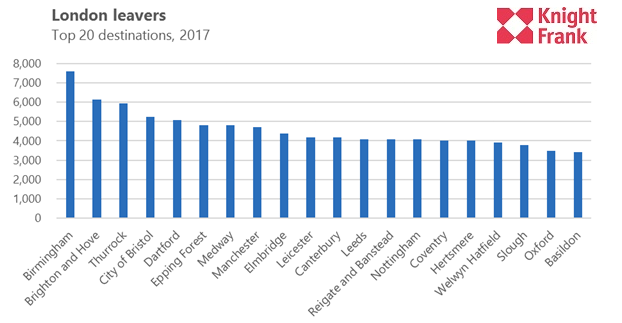London leavers reach new high
Migration from London to other parts of the UK is at its highest ever level, according to data from the Office for National Statistics which tracks internal moves within the UK.
2 minutes to read
In the year to June 2017, net outward migration from London reached 106,607 people (net migration refers to the number of people moving into the capital minus the number of people leaving) – more than 14% higher than in 2016 and 55% higher than five years earlier.
To put this into context, London’s population currently stands at 8.8 million, up from 8.1 million in 2011.
The most popular destination for leavers last year was Scotland, though there is no local authority breakdown. For those moving within England, Birmingham was the most popular destination, followed by Brighton and Hove, Thurrock and Bristol.

Londoners in their 30s formed the largest cohort leaving the capital, with the most popular destinations concentrated around the capital’s commuter belt with places like Elmbridge, Dartford, Reigate and Slough in the top ten.
“Housing affordability is likely to have helped sway the decision of some to leave London,” said Tom Bill, head of London residential research at Knight Frank. “While this highlights a potential longer-term risk for the capital’s economy, for others, exceptional house price growth in London in recent years will have enabled them to make the move.”
The only age group that had a positive net migration figure in the capital, according to the statistics which date back to 2011, is those in their twenties. This is likely to reflect the large number of graduates moving to London.

In total, just over 336,000 people left London for elsewhere in the UK in the year to June 2017, up by 15% on the previous year.
Oliver Knight, an associate in Knight Frank’s residential research team, said: “As well as a desire to ‘trade up the housing ladder’ in search of more space, increased employment opportunities outside London mean people are becoming more confident to make the move from the capital. Planned improvements to transport infrastructure, including the full opening on the Elizabeth Line next year and HS2 in 2026 will extend the scale of the commuter zone further, potentially supporting this trend.”
